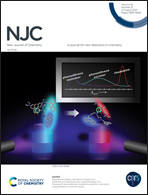Development of a novel reinforced film based on gellan gum/cellulose nanofiber/soy protein for skin tissue engineering application
Abstract
Recently, the importance of using biocompatible nanocomposite film with suitable properties has attracted interest for use in potential applications in the biomedical area. In this study, composite films of gellan gum/soy protein/cellulose nanofiber (GSC) with various concentrations of ethyl vanillin (EV) as a crosslinking agent (GSCE) were successfully produced with a solution casting technique. The effect of EV content on the mechanical properties, thermal stability, swelling ratios, in vitro degradability, and cell proliferation were investigated. Among the GSCE composite films produced, the film samples containing 1.5% EV had higher thermal stability, water absorption, and tensile properties. The GSCE composite films produced, showed no cell cytotoxicity, which indicates their good compatibility. Moreover, using the hemolysis assay, it was observed that all the GSCE composite films produced were hemocompatible. As a result, the incorporation of EV into the GSC matrix showed a marked influence on mechanical properties, thermal stability, swelling ratios, in vitro degradability, and cell proliferation. Therefore, it could be concluded that the GSCE composite films produced have a high potential for use in tissue engineering applications. As far as is known, the development of a novel film based on GG/SP/CNF reinforced by EV for use as a mat for healing the damaged tissue, is presented for the first time.



 Please wait while we load your content...
Please wait while we load your content...